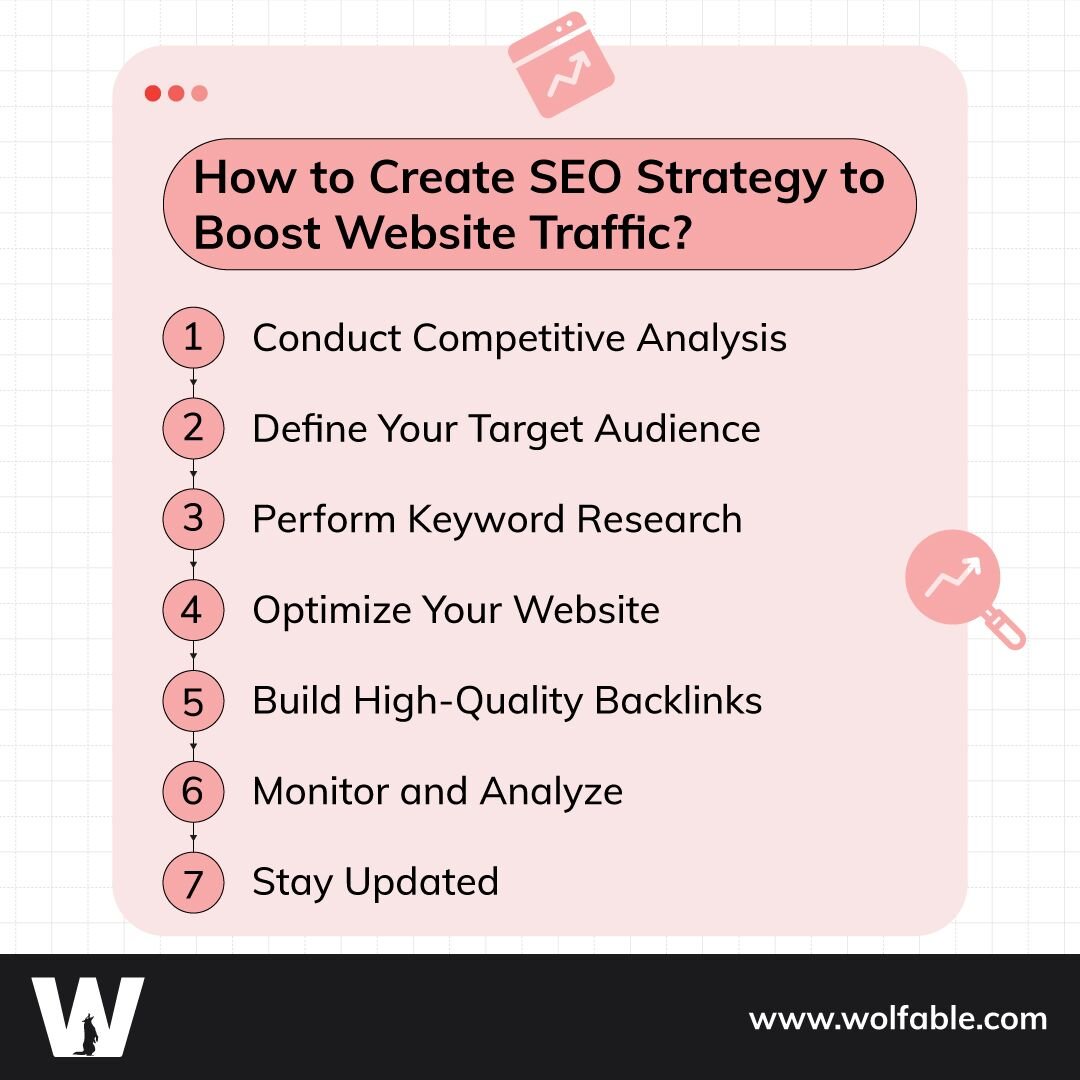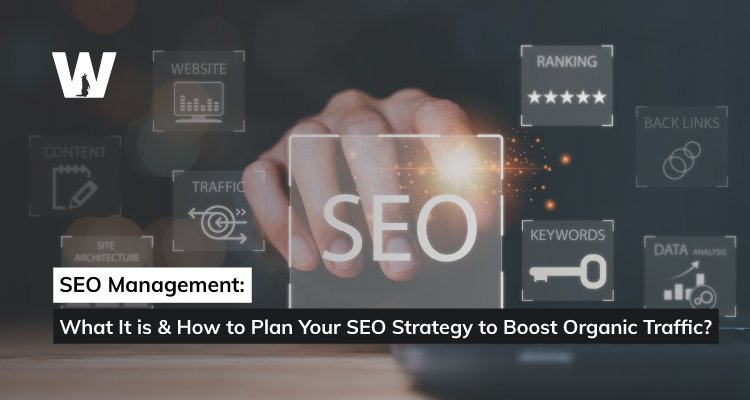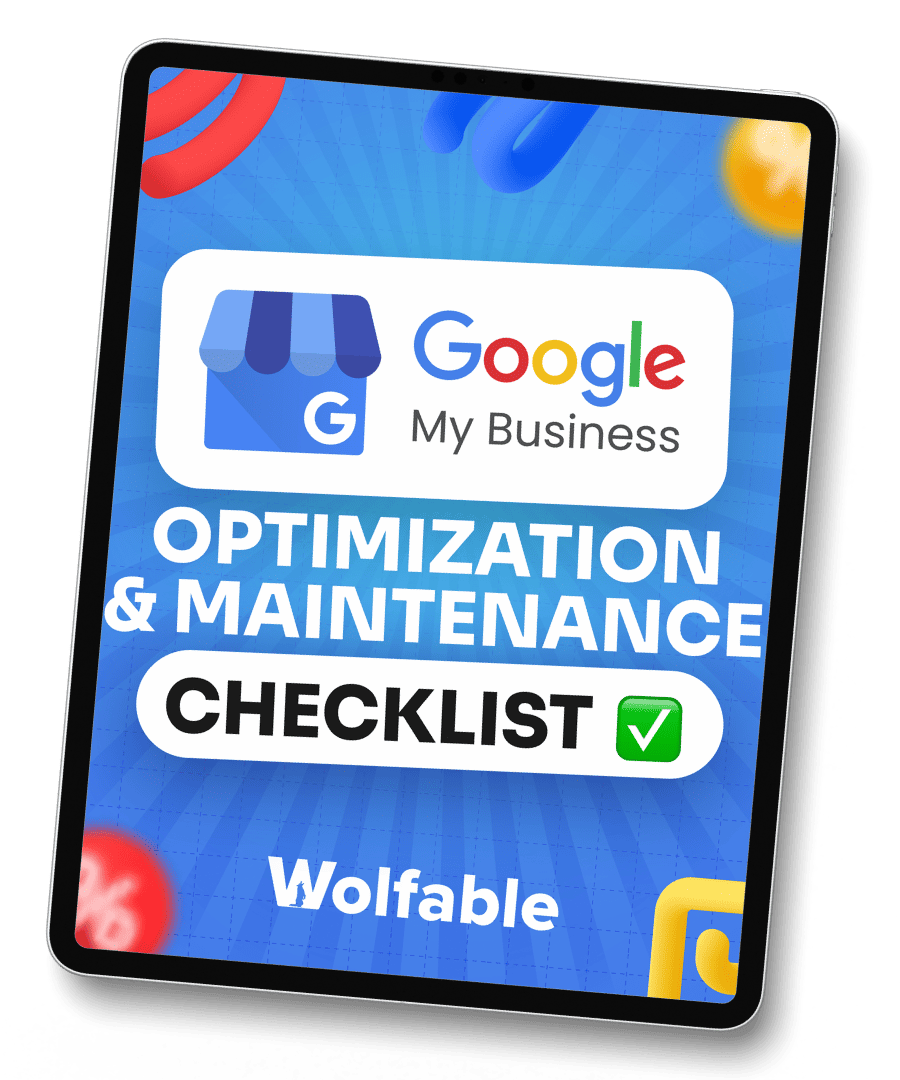Wraps up in 11 Minutes
As a business owner or marketer, you know how important it is to have a strong online presence.
These days, most customers start their search for products and services online. That means if your website doesn't show up high in search results, you're missing out on a lot of potential customers.
This is where SEO management comes in. SEO management is the process of optimizing your website to rank better in search engines like Google.
In this post, we’ll explore everything about SEO management, what it is, why it's so important, and the key tasks involved in creating an effective SEO strategy.
Let’s jump in!
What is SEO Management?
SEO management refers to the comprehensive approach to optimizing a website for better search engine visibility and higher organic traffic.
It encompasses a wide range of activities, from in-depth keyword research and on-page optimization to off-page link building and performance analysis.
The goal of SEO management is to ensure that your website is easily discoverable by your target audience when they search for relevant products, services, or information related to your business.
When you implement a well-crafted SEO strategy, you can significantly improve your website's ranking in the search engine results pages (SERPs), making it more likely that potential customers will find and buy from your brand.
Why is SEO Management Important?
Let’s face it — in this digital age, a majority of consumers start their buying journey with an online search, which is why effective SEO management is crucial for businesses to:
- Increase organic website traffic: SEO management can help drive more targeted, high-quality traffic to your site, improving the chances of converting visitors into leads or customers.
- Enhance brand visibility: Appearing prominently in search engine results pages (SERPs) can significantly boost your brand's online visibility and credibility, which ultimately helps you stand out from competitors.
- Improve user experience: SEO management often involves improving website structure, content quality, and overall user experience, which can positively impact customer engagement and satisfaction.
- Achieve long-term results: Unlike paid advertising, the benefits of SEO can continue to accrue over time, making it a sustainable and cost-effective marketing strategy.
What Does SEO Management Involve?
Effective SEO management encompasses a wide range of tasks and strategies, which can be broadly classified into two main categories:
- On-page SEO Management
- Off-page SEO Management
- Technical SEO
- Local SEO
- Content Marketing
On-Page SEO Management Tasks
Let’s check out the key on-page SEO management tasks that are important to boost your website's organic traffic.
Keyword Research
The foundation of any SEO strategy is thorough keyword research.
This involves identifying the most relevant and high-performing keywords for your business, understanding user search intent, and incorporating these keywords throughout your website's content and metadata.
When you conduct in-depth keyword research, you can better align your website's content with the terms and phrases your target audience is searching for, improving the chances of your pages appearing in the top search results.
Keyword Grouping
To improve the relevance and organization of your content, it's important to group related keywords together and create content that targets specific keyword clusters.
This helps search engines better understand the context and hierarchy of your website's information, making it more likely that your pages will be served up for relevant searches.
URL Structure
Optimizing your website's URL structure, including the use of keywords, can enhance search engine visibility and user-friendliness.
Clean, descriptive URLs that accurately reflect the content of each page can make it easier for search engines to crawl and index your website, as well as improve the user experience for your visitors.
Image Optimization
Ensuring your website's images are properly optimized for search engines, with relevant alt text and file names, can improve overall page performance and user experience.
As a matter of fact, the majority of search engines rely on these elements to understand the context and relevance of your visual content, which can then be factored into their ranking algorithms.
Internal Linking
Establishing a well-structured internal linking system can help search engines better understand the hierarchy and relationships between the various pages on your website.
When you strategically link related content across your website, you can easily guide users (and search engines) through your site, and make it easier for them to find the information they're looking for.
Optimize Meta Elements
Crafting compelling and keyword-rich title tags, meta descriptions, and other metadata can significantly influence click-through rates from search engine results.
These elements play a crucial role in how your website is displayed and perceived by users in the SERPs, so it's important to optimize them for both search engines and human readers.
Off-Page SEO Management Tasks
Now, let’s check out the key off-page SEO management tasks that are equally important to boost your website's organic traffic.
Guest Posting
Securing guest posting opportunities on reputable, industry-relevant websites can help build backlinks and improve your website's authority.
As a matter of fact, when you contribute valuable content to other established platforms, you can not only drive referral traffic but also earn valuable backlinks that signal to search engines that your site is a trusted and authoritative resource.
Backlink Building
Actively pursuing and acquiring high-quality, relevant backlinks from authoritative sources can significantly boost your website's search engine rankings.
This off-page SEO strategy involves building relationships with other websites, creating shareable content, and leveraging various link-building tactics to earn backlinks that improve your site's overall link profile.
Brand Mention Link Building
Identifying and converting unlinked brand mentions into valuable backlinks can be an effective off-page SEO strategy.
This usually involves monitoring your online presence and reaching out to websites that mention your brand but don't link back to your site. When you do so, you can secure additional backlinks that can positively impact your search engine visibility.
NAP Link Building
NAP link building involves ensuring your business's name, address, and phone number (NAP) are consistently and accurately listed across various online directories and platforms to improve local SEO.
This helps search engines understand the physical location of your business and associate it with relevant local search queries, which make it more likely that your website will appear in local search results.
Anchor Text Diversity
Maintaining a diverse anchor text profile, with a balance of branded, contextual, and keyword-rich links, can help avoid potential penalties from search engines.
In fact, overly optimized anchor text can be seen as manipulative, so it's important to diversify the way your backlinks are labeled to appear more natural and organic.
Technical SEO Tasks
Technical SEO is all about making your website easy for search engines to understand and navigate.
Let's break it down into simple terms:
Site Speed
Have you ever left a website because it took too long to load? That's exactly what we're trying to avoid here.
A fast website keeps visitors happy and helps you rank better in search results.
There are several ways to speed up your site. First, you can optimize your images. Large, high-quality images look great, but they can slow down your site. Fo this, you can use various tools available online to compress your images without losing quality.
Another way to speed up your site is to use a good web host. Think of your web host as the home for your website. A good host will make sure your site loads quickly for visitors all around the world.
You can also use something called caching, which is like saving a copy of your website so it loads faster for repeat visitors.
Mobile-Friendliness
These days, more people browse the internet on their phones than on computers. That's why it's super important that your website looks good and works well on mobile devices.
A mobile-friendly website adjusts to fit any screen size. This is called responsive design. In simple terms, your website should work just as well on a tiny phone screen as it does on a big desktop monitor.
When making your site mobile-friendly, think about things like button size. On a phone, people are using their fingers to navigate, not a precise mouse pointer. So make sure buttons and links are big enough to tap easily.
Site Structure
Having a clean, well-organized site structure is extremely important from technical SEO perspective.
To do this, you need to start grouping similar content together. If you're a clothing store, you might have categories for men's clothes, women's clothes, accessories, and so on. Then within those categories, you can have subcategories. For example, under women's clothes, you might have sections for dresses, pants, shirts, etc.
Another important part of site structure is using clear, descriptive URLs. Instead of a web address full of random numbers and letters, use words that describe what's on the page.
For example, "www.yourstore.com/women-dresses" is much clearer than "www.yourstore.com/category22/products". This helps both people and search engines understand what's on each page of your site.
HTTPS Security
HTTPS security helps keep your visitors' information safe and makes search engines trust your site more.
You can tell if a site has HTTPS security by looking at the web address. If it starts with "https://" instead of just "http://", that means it's secure. You'll also see a little padlock icon in the address bar.
This security is especially important if your website handles any sensitive information, like passwords or credit card numbers.
Getting HTTPS security for your site is usually pretty simple. Many web hosts offer it for free these days. If you're not sure how to set it up, don't be afraid to ask your web host for help. They should be able to guide you through the process.
Fixing Errors
Just like you'd fix a broken step or a leaky faucet in your home, you need to fix errors on your website. These errors can frustrate visitors and make search engines think your site isn't well-maintained.
One common error is broken links. These are like roads that lead nowhere. You click on them expecting to go somewhere, but you just get an error message instead. You can use tools to scan your site for broken links, then either fix them or remove them.
Another issue to watch out for is duplicate content. This is when you have the exact same content on multiple pages of your site. It confuses search engines because they don't know which version to show in search results.
Local SEO Tasks
If you have a physical store or serve customers in specific areas, local SEO is super important. It's all about helping nearby customers find you when they're looking for what you offer.
Google Business Profile
Google Business Profile is a free tool from Google that helps your business show up in local search results and on Google Maps.
Setting up your Google My Business profile is pretty simple. You start by claiming your business listing - this proves to Google that you're the real owner of the business. Then, you fill out as much information as possible.
This includes your business hours, the services you offer, photos of your business, and more. The more information you provide, the better.
One of the best things about Google My Business is that it allows customers to leave reviews. Good reviews can really help your business stand out. And when you do get reviews - good or bad - always respond to them politely. It shows that you care about what your customers think.
NAP Consistency
NAP stands for Name, Address, and Phone Number. It might sound simple, but keeping this information consistent across the internet is super important for local SEO.
Imagine if your friend gave you three different phone numbers and said "just try them all, one of them will work!" It would be pretty frustrating, right? That's how search engines feel when they see inconsistent NAP information for your business.
So, if your address is different on your website than it is on Yelp or Facebook, it confuses both customers and search engines.To fix this, make a list of everywhere your business is listed online. This includes your own website, social media profiles, and any business directories you're listed in.
Go through and make sure your name, address, and phone number are exactly the same on all of them. It might take some time, but it's worth it to make sure customers can find you easily.
Local Keywords
Local keywords are the words and phrases that people in your area use when they're looking for businesses like yours.
Using these words on your website can help you show up in local search results.
To find good local keywords, think like a local customer. If you're a pizza place in Chicago, people might search for things like "best deep dish pizza in Chicago" or "late-night pizza delivery near me". These are the kinds of phrases you want to use on your website.
But here's the trick — you want to use these local keywords naturally. In other words, use these keywords when they make sense in your content, sound natural, and helpful to real people, not just search engines.
Local Content
Local content is all about creating information that's specifically relevant to your local area.
It's a great way to show search engines (and potential customers) that you're an active part of your local community.
One way to create local content is to write about local events. Are you sponsoring a local festival or charity event? Write a blog post about it! Not only does this show your community involvement, but it also gives you a chance to use those local keywords we talked about earlier.
Another idea is to create local guides. If you're a hotel, for example, you could create a guide to the best restaurants in your area. Or if you're a real estate agent, you could write about the best neighborhoods for families.
This kind of content is useful for your customers and shows your local expertise.
Local Link Building
Local link building is about getting other local websites to link to yours.
It shows search engines that you're a trusted part of the local community.
One way to build local links is to join local business organizations. Many of these groups have member directories on their websites, and they'll include a link to your site. This not only helps with SEO, but it's also a great way to network with other local businesses.
Another strategy is to sponsor local events. Often, event websites will link to their sponsors. This gets you a valuable backlink and also shows your community involvement.
Customer Reviews
Customer reviews are super important for local businesses. Good reviews can help you stand out from the competition and convince potential customers to choose you.
So, when a customer has a good experience with your business, it's okay to ask them to share that experience online. You could send a follow-up email after their visit with a link to where they can leave a review.
When you do get reviews, always respond to them - both the good and the bad. For instance, thank people for positive reviews, and address negative ones professionally. Show that you value all feedback and are committed to providing a great experience for every customer.
This kind of engagement can turn even a negative review into a positive opportunity to show your customer service skills.
Content Marketing
Content marketing is all about creating valuable, interesting information that your audience will love. Let’s see how you can provide helpful information to your potential customers so that it also helps your bottom line.
Understand Your Audience
Before you start creating content, you need to know who you're creating it for.
In other words, you need to create detailed buyer persona. For the uninitiated, buyer persona is basically a character profile for your ideal customer. Think about things like their age, job, interests, and the problems they might have that your business can solve.
You can gather this information by looking at your current customers, using social media insights, or even directly surveying your audience.
Once you have a good idea of who your audience is, think about what kind of information they might be looking for.
What questions do they have?
What problems do they need to solve?
Your content should aim to provide answers and solutions. Remember, the goal is to be helpful and build trust with your audience.
Keyword Research
Keyword research is about finding out what words and phrases your potential customers are using when they search for businesses like yours.
There are lots of tools you can use for keyword research, like Google Keyword Planner or SEMrush. These tools can show you how often certain words are searched for and how difficult it might be to rank for those words.
Ideally, you should select keywords that have a good balance of search volume (how often they're searched for) and competition (how many other websites are trying to rank for that word).
Create High-Quality Content
Creating high-quality content is the heart of content marketing. Your content should be so good that people want to share it with others.
Good content is original - don't just repeat what everyone else is saying. Bring your unique perspective or experience to the topic. It should also be actionable, giving people information they can use right away.
For example, if you're writing about how to choose running shoes, include specific tips that readers can use next time they go shoe shopping.
Remember to use different formats for your content. Some people prefer reading articles, while others might like watching videos or looking at infographics. So, when you create different forms of content, you can appeal to more people and keep your content interesting.
Optimize Your Content
Optimizing your content basically means making it friendly for both humans and search engines.
The best way to optimize content is to use keywords naturally throughout your content.
For example, you can include them in title, in some of your headings, and throughout the text. But don't overdo it - your content should still read naturally. Remember, you're writing for people first, search engines second.
Furthermore, always use header tags (H1, H2, etc.) to organize your content - this makes it easier for both people and search engines to understand the structure of your content.
Consistent Publishing
Consistent publishing is about showing up regularly for your audience.
It is recommended to create a content calendar to plan out your content in advance. This helps you stay organized and ensures you're covering a variety of topics.
But be realistic about how often you can publish. It's better to publish high-quality content less often than to rush out low-quality content just to stick to a schedule.
If you're struggling to create enough content, try repurposing what you already have. For example, you could turn a long blog post into a series of social media posts, or create an infographic summarizing the main points of a video. This helps you create more content with less effort.
Promote Your Content
Creating great content is only half the battle - you also need to get it in front of people.
Start by sharing your content on all your social media channels. Experiment with different times and days to see when your audience is most active.
Email marketing is another great way to promote your content. If someone has signed up for your email list, they're already interested in what you have to say. Send them your latest content, but make sure you're providing value, not just filling up their inbox.
Update Old/Outdated Content
Lastly, you should neglect the old content already published on your website.
What we mean by that is you need to do regular content audits where you review your old posts.
Is the information still accurate?
Have there been new developments in your field?
Update your content to reflect any changes. This keeps your content relevant and useful for your audience.
You can also improve the readability of old content. Break up long paragraphs, add new subheadings, or include new images to make it more engaging.
This helps both readers and search engines explore more of your site.
How to Create SEO Strategy to Boost Website Traffic
Developing an effective SEO strategy to boost website traffic involves a comprehensive, data-driven approach that combines both on-page and off-page optimization tactics.
Here's a step-by-step guide to help you create your own SEO strategy:

Step 1. Conduct Competitive Analysis
The first step is to research your competitors and analyze their SEO strategies.
Ideally, you should look at the keywords they're targeting, the content they're creating, and the backlink profiles they've built.
This competitive intelligence will reveal opportunities where you can outmaneuver them in the search results. Maybe there are relevant keywords they're missing, or their content isn't as strong as it could be.
Identifying these gaps will help you craft a more effective SEO strategy for your own website.
Step 2. Define Your Target Audience
It's essential that you thoroughly understand your target audience - their search behaviors, pain points, and content preferences.
- What kind of information are they looking for online?
- What questions do they need to be answered?
Knowing your audience inside and out will allow you to tailor your SEO strategy to better meet their needs.
This increases the chances of your content appearing prominently when they're searching for relevant topics.
Step 3. Perform Keyword Research
At the very heart of any successful SEO strategy is in-depth, strategic keyword research.
You need to identify the most relevant and high-performing keywords for your business — the specific terms and phrases that your target customers are actively searching for on Google and other search engines.
In addition, we also recommend looking closely at factors like search volume, competition levels, and user intent to prioritize the best keywords to incorporate into your content, page optimization, and overall strategy.
Step 4. Optimize Your Website
With your comprehensive keyword research complete, it's time to implement a robust on-page SEO strategy.
This involves meticulously optimizing various elements of your website, such as content quality, URL structure, image optimization, internal linking, and metadata optimization.
When you take care of these crucial on-page factors and ensure they’re fully aligned with best practices, you can significantly enhance your website's relevance and visibility in the search engine results pages.
Step 5. Build High-Quality Backlinks
The off-page side of your SEO strategy should be focused on actively acquiring authoritative, relevant backlinks from high-quality websites.
This could involve tactics like:
- Securing guest posting opportunities on industry-leading publications
- Building out citations for your business's name, address, and phone number (NAP)
- Earning valuable brand mentions that you can then convert into powerful backlinks
Always remember that a strong, diverse backlink profile is an absolutely essential ranking signal for search engines.
Step 6. Monitor and Analyze
Continuous tracking, measurement, and analysis of your SEO performance is absolutely critical.
To do this effectively, it is crucial to utilize tools like Google Analytics and Search Console to closely monitor key metrics such as organic traffic, keyword rankings, bounce rates, and conversion data.
Regularly reviewing this data will allow you to make informed, data-driven adjustments to your SEO strategy over time. This, in turn, will help ensure it remains maximally effective as search algorithms and user behaviors continue to evolve.
Step 7. Stay Updated
It's important to remember that the world of SEO is constantly changing, with search engines regularly updating their algorithms and best practices shifting on a regular basis.
Furthermore, it's essential that you make a concerted effort to stay up-to-date on the latest industry trends and changes. For this, it’s a good idea to follow reputable SEO publications, attend relevant webinars and conferences, and actively engage with the broader SEO community online.
Adapting your strategies accordingly will help keep your website ahead of the curve and positioned for long-term success.
In the end, remember that it’s a long-term process that requires patience and persistence, but the results are well worth the effort for any business looking to thrive in the digital landscape.
Conclusion
As you can see, effective SEO management is a critical component of any successful digital marketing strategy.
Whether you're a small business owner, a digital marketer, or anyone looking to improve their website's search engine performance, mastering the art of SEO management can be a game-changer.
The strategies and tactics outlined in this post provide a solid foundation, but implementing them effectively requires time, effort, and specialized expertise.
That's where the team at Wolfable Content Marketing Agency can help. As a leading SEO management and content marketing agency, we have a proven track record of helping businesses just like yours achieve exceptional results.
If you're ready to take your website's search engine performance to new heights, we encourage you to contact the Wolfable team today.









